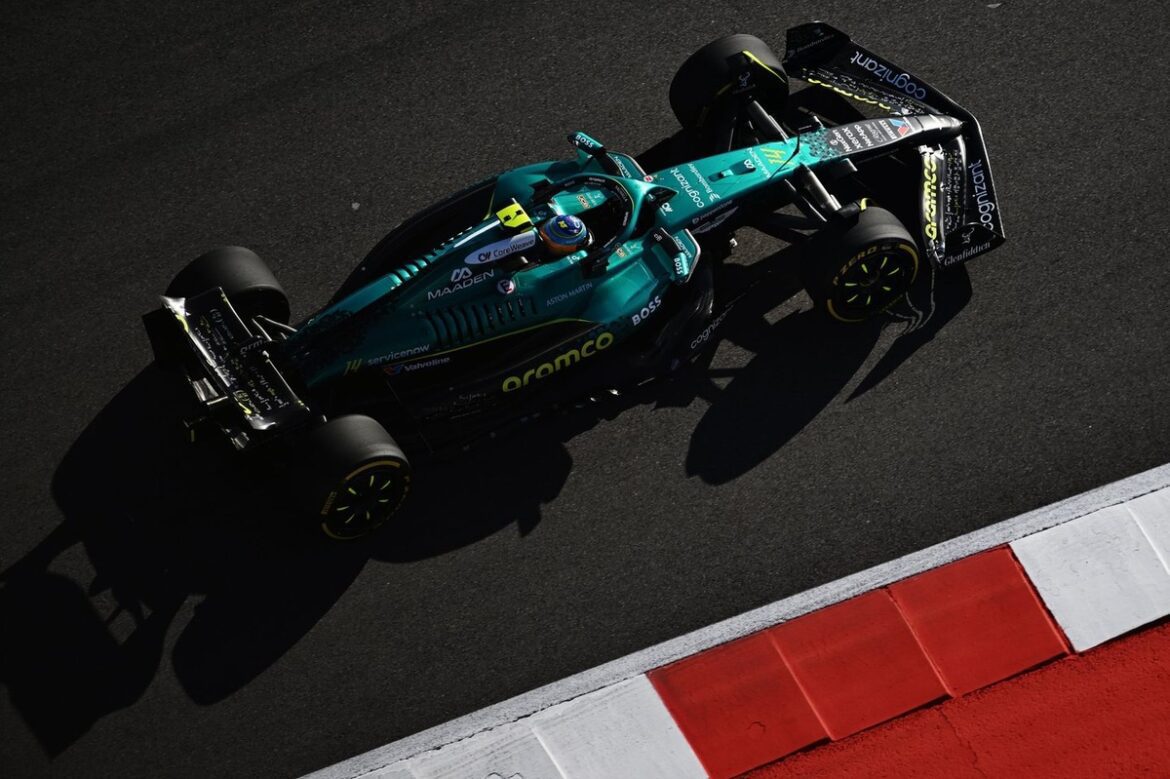Analyzing Fernando Alonso’s Performance with Aston Martin at the US Grand Prix
At the US Grand Prix held in Austin, Fernando Alonso provided insights into Aston Martin’s performance, suggesting that the team’s analysis ranked them as the eighth fastest in terms of pure pace. His statements indicated that their appearances of speed during the race weekend might have been influenced by external factors.
Alonso’s Race Weekend Overview
During the various sessions of the race weekend, Alonso had a mixed bag of results. He secured fourth place in the first practice session, followed by a sixth-place finish in sprint qualifying. However, during the main race, Alonso started and finished in a disappointing tenth place after being involved in an early incident during the sprint race. Such results are not uncommon in the unpredictable environment of sprint weekends, which often disrupt the usual order of competition.
Alonso’s comments following the sprint race reflected his perspective on the unpredictable nature of sprint weekends. "It’s a sprint weekend, so there is a bit of a mix, and newcomers are still getting accustomed to the track," he elaborated. This acknowledgment of the unique challenges posed by a sprint format was pivotal in understanding the team’s overall performance.
One notable aspect of the weekend was the tire strategy employed by various teams. Pirelli introduced a ‘step’ between the harder compounds, leading teams to primarily utilize the hard compound C1 tires in practice, which proved to be slower than the C3 medium tires. This strategic choice played a significant role in how teams approached the race.
Team Dynamics and Competitive Analysis
After the race, Alonso reiterated that Aston Martin’s one-lap speed seemed to outpace their race performance. He noted, "We were slow compared to the cars in front of us, and we were holding off Liam Lawson’s Racing Bull behind us." This observation highlights the disparity between qualifying and race pace, a concern that Alonso emphasized as needing improvement in the remaining races of the season.
Alonso’s performance was also reflective of the challenges he faced at the start of the race. He lost two positions initially, falling behind Nico Hulkenberg and Yuki Tsunoda. However, circumstances changed when Carlos Sainz collided with Kimi Antonelli, leading to Sainz’s early exit from the race. This incident triggered a virtual safety car, providing Alonso a chance to regain some ground.
As the race progressed, Alonso struggled to maintain his position against the competition. He noted that Hulkenberg went on to build a significant lead, stretching the gap to 14 seconds by the end of the race. Furthermore, Oliver Bearman faced difficulties, spinning out while attempting to overtake Tsunoda, which only added to the challenges Alonso faced from behind.
Assessing the Performance Metrics
When reflecting on the final outcome of the race, Alonso was candid about his assessment of the team’s standings. He remarked, "Given our performance, we probably ranked ninth today." This acknowledgment of a potential slip in rankings emphasizes the ongoing competitive nature of Formula 1, where teams constantly strive to optimize their performance.
Alonso’s comments regarding the competition highlighted the current landscape of the grid. He speculated that Alpine might be struggling more than Aston Martin, but he recognized Haas and Sauber as teams performing ahead of them. This competitive analysis provided a broader context for Aston Martin’s place within the sport.
Strategic Considerations and Race Day Decisions
Mike Krack, Aston Martin’s chief trackside officer, contributed to the discussion surrounding race strategy and its impact on performance. He noted the variations in tire strategies among teams, with different drivers opting for soft, hard, or medium tires, which ultimately influenced the race’s dynamics. Alonso’s teammate, Lance Stroll, was among those who started on soft tires, alongside notable competitors like Charles Leclerc and Gabriel Bortoleto.
The tire strategy became a focal point for Krack as he emphasized the need for a detailed analysis post-race. "The analysis is something we need to look at in detail," he stated. This emphasis on examining tire performance and race conditions is essential for understanding the team’s competitive edge.
Navigating Traffic and Race Conditions
Traffic and DRS (Drag Reduction System) played a significant role in the race, complicating the strategic landscape for drivers. Krack pointed out that analyzing the data on traffic, tire performance, and DRS effectiveness would be crucial in determining where the team truly stands in terms of race pace. This kind of assessment is vital for refining strategies and improving performance in future races.
Alonso’s recognition of the unique strengths and weaknesses of the Aston Martin car also highlights the inherent variability in performance across different circuits. He acknowledged that certain tracks suit their car better than others, which is a common characteristic in Formula 1. Understanding these dynamics is essential for optimizing race strategies and maximizing points throughout the season.
Looking Ahead: The Road to Improvement
As the season progresses, Alonso and Aston Martin face the challenge of enhancing their overall performance. The need to capitalize on qualifying speed while translating that into competitive race pace is paramount. Alonso’s candid reflections on the need for improvement resonate with the team’s objectives as they look toward the upcoming races.
With five races remaining in the season, the urgency for Aston Martin to address performance disparities is clear. Alonso’s determination to refine the team’s approach and enhance their competitive edge will be pivotal as they prepare for the challenges that lie ahead, particularly with the next race set in Mexico.
In conclusion, the analysis of Fernando Alonso’s performance at the US Grand Prix provides valuable insights into the complexities of Formula 1 racing. From tire strategies to race dynamics, every aspect plays a crucial role in determining a team’s success. As Aston Martin continues to navigate the competitive landscape, the focus on improvement and strategic execution will be essential for achieving their goals in the remaining races of the season.
